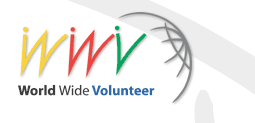Report (Part 2): Third World Summit on the Internet and Multimedia10 October 2002 © ICVolunteers and the Swissmedia, Montreux, Switzerland Contents
How to Provide for Original and Diverse Local Digital Content?How to Provide for Original and Diverse Local Digital Content?Time: 9 October 2002, 15:00-17:00 Location: A 450 Chair: Mr. René Bouchard (Director general, Heritage Ministry, Canada) Presenters/ Participants: Graham Vickrey (Principal Administrator, OECD, UK) Bridging the divide also means making sure that people, wherever they may live, get access to digital content that is localized, culturally relevant and available for use and enjoyment in the various technological Internet and multimedia platforms. Producing and distributing a diverse and original digital content is thus of paramount importance to the multimedia industry worldwide and its backers in both the private and public sectors. Several issues come into play: the availability of talent or human resources capable of delivering content that is original, relevant and localized, the multimedia companies' financial capability to produce and innovate, the role of governments (national programs and policies) as important backers, people's capacity to have access to such content (connectivity) and finally a technological and regulatory environment capable of bringing to the fore the above-mentioned elements. Mr. Graham Vickery, Principal Administrator of OECD, UK, was the first panelist who raised the issue of Connectivity and Content. He started pointing out that access to information and communication technologies (ICT) is critical for economic and social development. The digital divide can be related to income, education, workplace use, age, family type and urban/rural location. According to statistics, the gap between households with the highest and lowest levels of ICT access is getting wider, but rates of growth are faster for lagging groups. Therefore, the digital divide can either be said to be growing or shrinking, depending on how you look at it. All governments have policies and programs to reduce the digital divide but policy emphasis differs among OCDE countries. English-speaking countries aim for pro-competition market mechanisms, infrastructure in disadvantaged areas, e-government. Meanwhile, northern Europe emphasizes ICT training, small firms, southern Europe in public access (schools, institutions) and Asia is concerned about the elderly / disabled people. The last issue raised by the panelist was the importance of digital delivery in the health care sector. Ms. Olga Heker of President of AADM, Argentina, talked about the situation of the Internet and its implementation in her country. There were a total of 580 millions Internet users on May 2002. Only 6% of them are in Latin American countries. Chile is the most advanced country, with 20% of its population, followed by Uruguay and Venezuela with 13% and Argentina and Peru with 10%. There are 4 million Internet users in Argentina, 1.5 of them use cyber-cafes. She pointed out that projects to drive down costs for Internet access are needed in her country. Technical knowledge is available, but there is a problem with financing. The sector does not get any support from the current government. The Swiss panelist, Prof. Jean-Loup Chappelet of IDHEAP gave a presentation on "Providing digital content: the Swiss government's role". He started explaining the Swiss info society policy (www.infosociety.ch) and pointed out 4 federal programs:
He finished his presentation by talking about the legal framework and the ratification of two World Intellectual Property Organization (WIPO) Treaties on author's intellectual property. Mr. George Sharkov, Chairman of the Bulgarian Association of software developers, made his presentation on how to provide diverse and culturally relevant local digital content, taking his country, Bulgaria, as an example. Internet penetration in Bulgaria has increased quite a lot in the last few years. The rate of users/population was 8.1% in 2001. Bulgaria is one of the top ten IT certified countries. Its IT and Software industry has a stable growth of 30% per annum, with highly qualified forces, competitive pricing, and a strategic geographic location. Government is supporting the ICT sector and the EU accession gives specific external factors. Finally he rose up the issue of local vs. global content-references, global classification and language problems. "Global" content need for interoperability and synchronization export/import services. Mr. Patrice Husson, Principle Administrator of the European Commission (France), described the eEurope project, particularly its e-Content component. eEurope, aimed for European Union members and candidates, began in 1999 and will continue until 2005. Its main themes are cheaper Internet, e-Research, e-Security, e-Education, e-Working, e-Accessibility, e-Commerce, e-Government, e-Health, e-Transport and e-Content. The e-Content component aims to promote European digital content on global networks through three action lines: public sector information, linguistic and cultural diversity, access to capital and management of rights. During the first two years of the project, 21 large projects, 30 small projects, 3 accompanying measures and 4 studies have been created. Mr. Peter Armstrong, Director of oneworld.net, presented his organization's approach for creating local content. Their "Open Knowledge Networks" program encourages grassroots networks to grow by establishing community access points, along with hubs for processing and redirecting information. The program aimed to fulfill the following requirements: standards for knowledge containers in XML, connecting to the Internet without going online, new P2P network of existing knowledge workers, appropriate IPR licenses and a business model for sustainability. The program has been piloted in India and has proven very successful at developing local information, created for and by local people, in local languages. Surprising Issues
Interesting Questions Conclusions Posted: 2010-1-05 Updated: 2010-1-05 | ||








